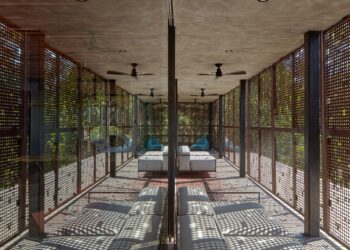Alerting ocean pollution by plastic overuse
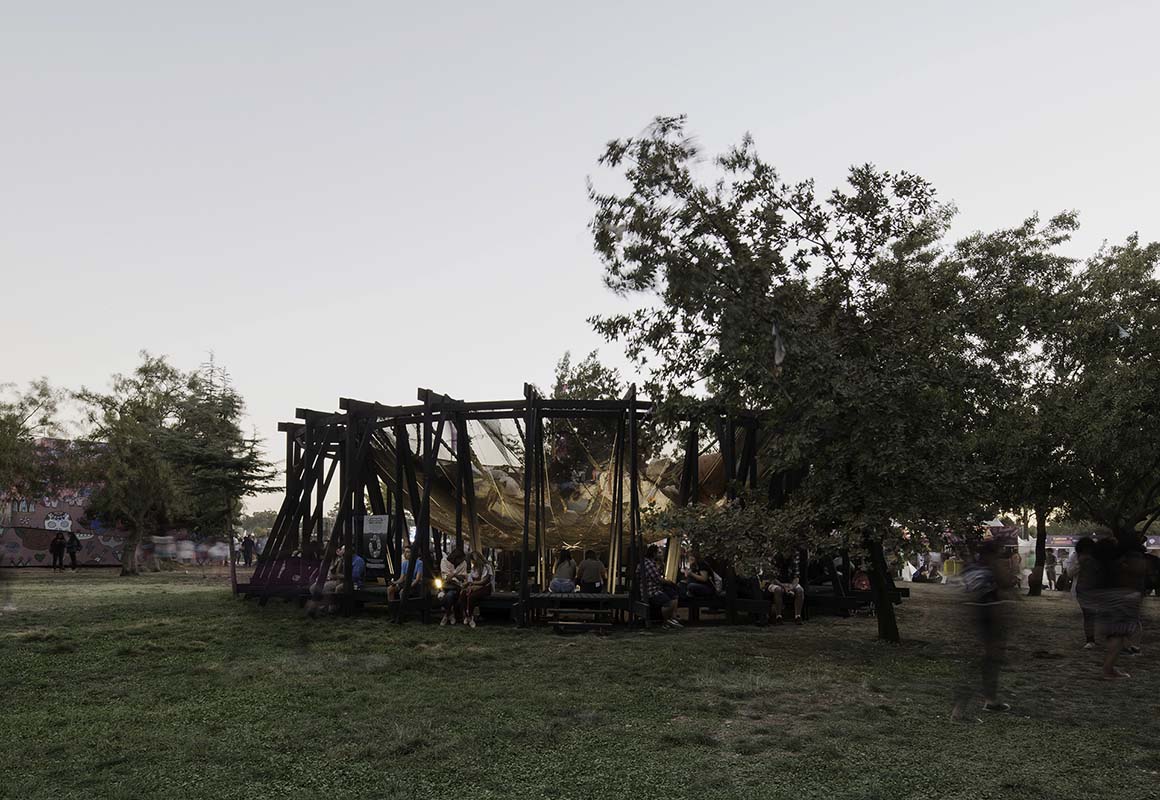
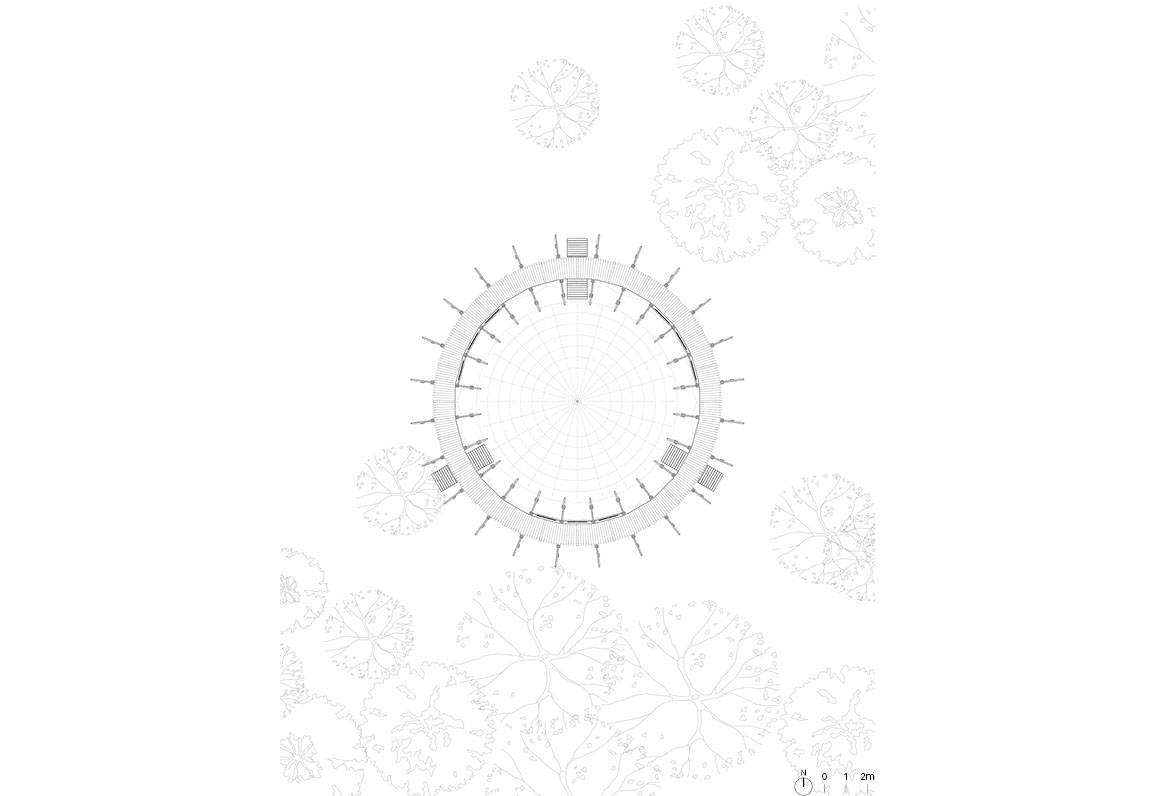
The weight of the waste piled on the circular net caused it to sag. The waste dome, which appeared at a music festival in a park in Chile, was created to remind the public of the growing severity of ocean pollution as the use of plastics increases. In reality, indiscriminately discarded plastics and waste form floating islands of garbage on the sea. The waste accumulated on the sagging net symbolizes this phenomenon.
Contrary to expectations, the publicly displayed pavilion is presented simply as a random heap of mixed waste. The message is strongly conveyed through the intuitive image. The material used is a fishing net. The wooden structures supporting the net are arranged in a circular pattern with repeated modular units. The horizontal elements at the bottom provide seating. The waste suspended above the heads of those seated is as heavy as the amount of waste filling the net. This weight forms an inverted dome with a convex bottom.
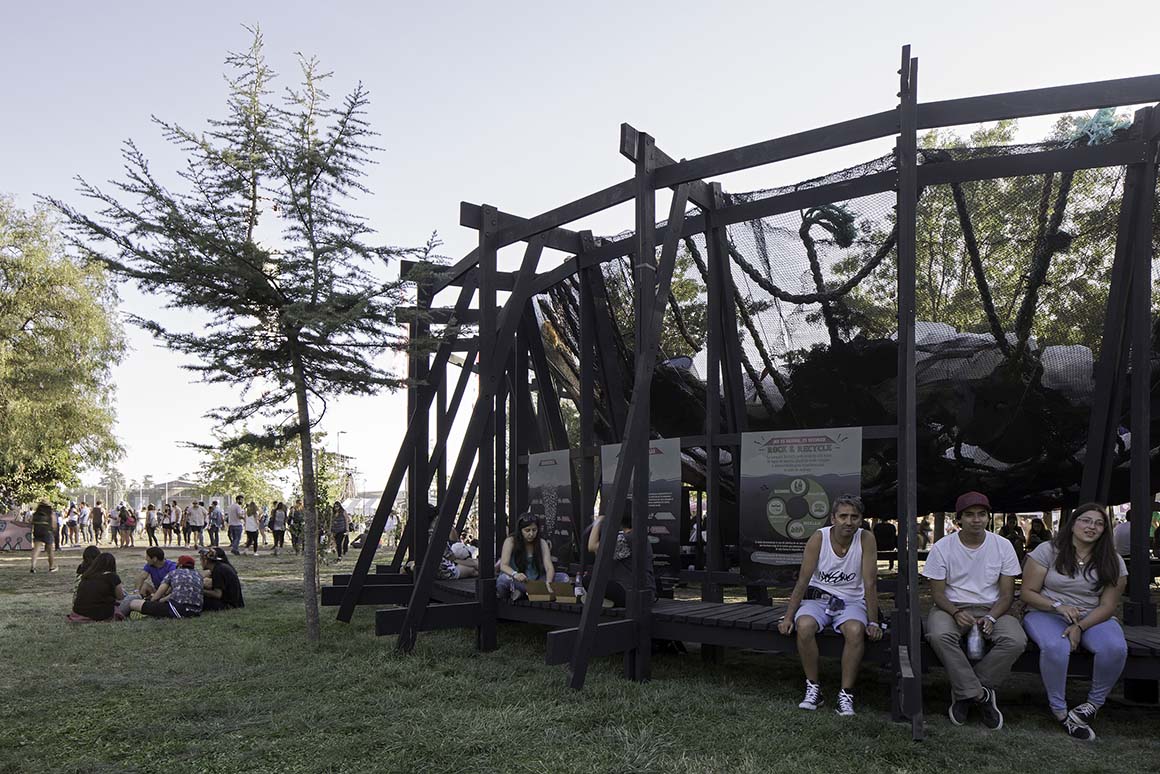
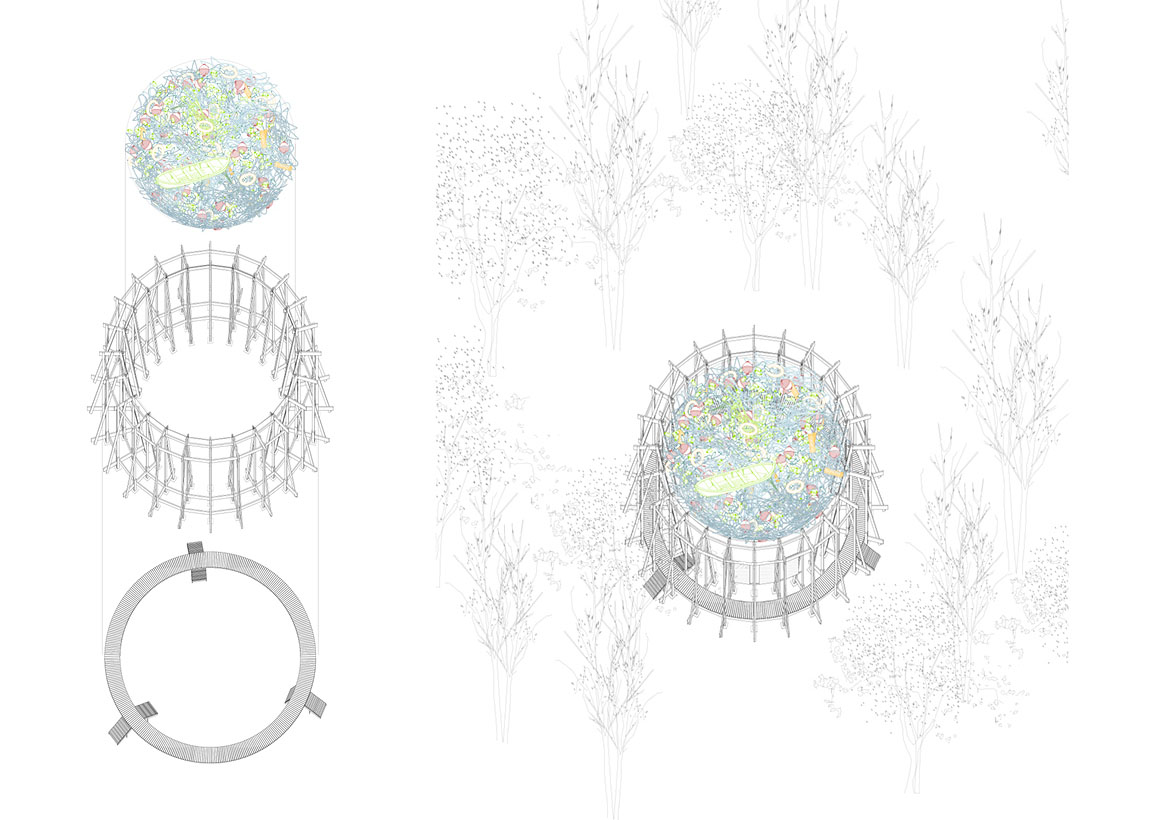
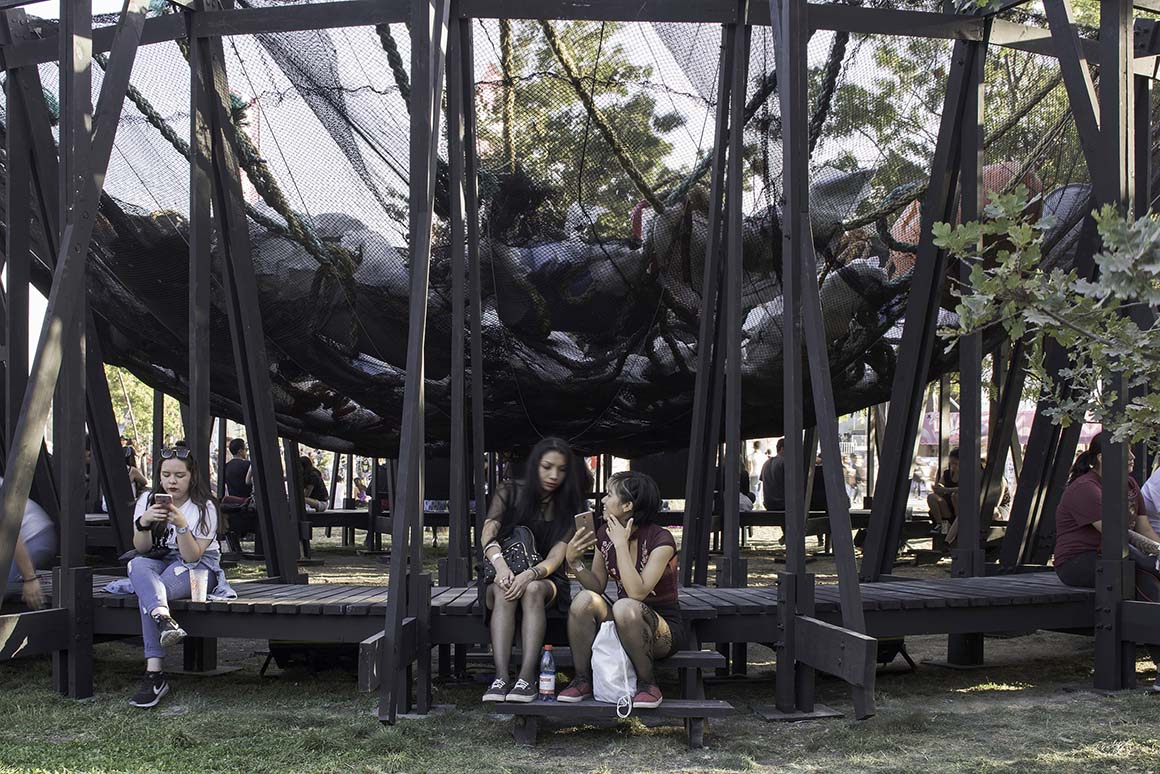
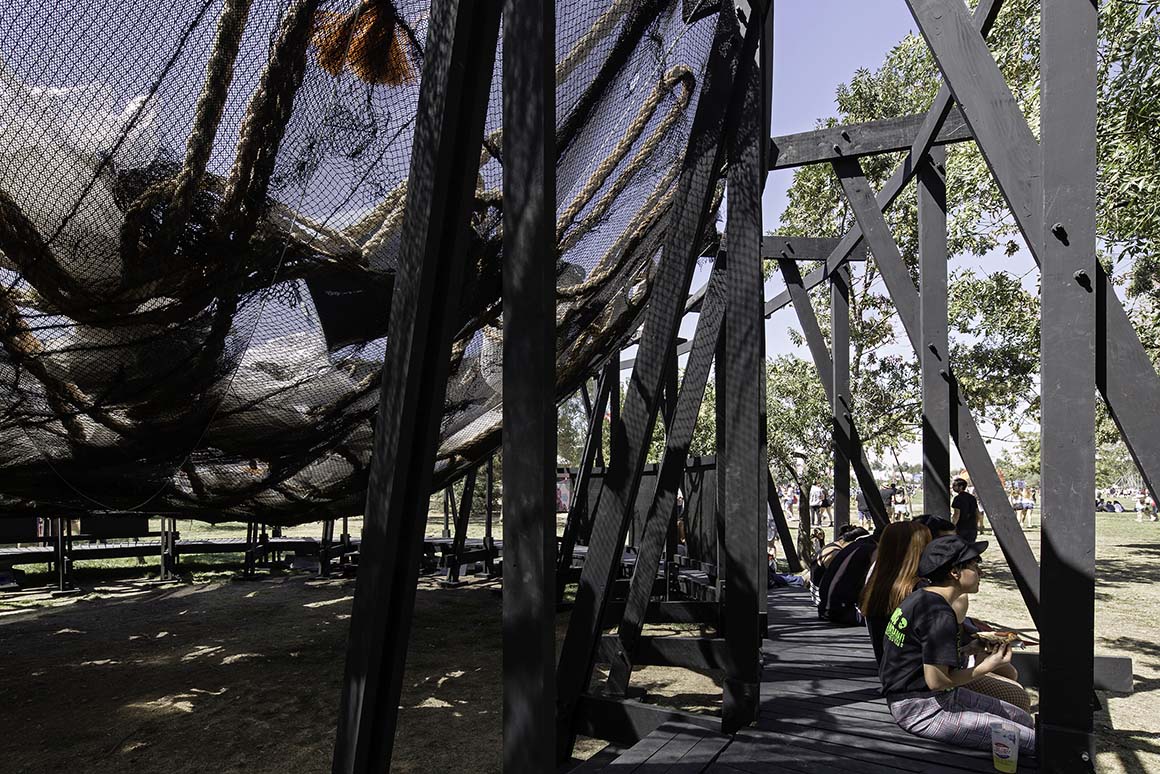

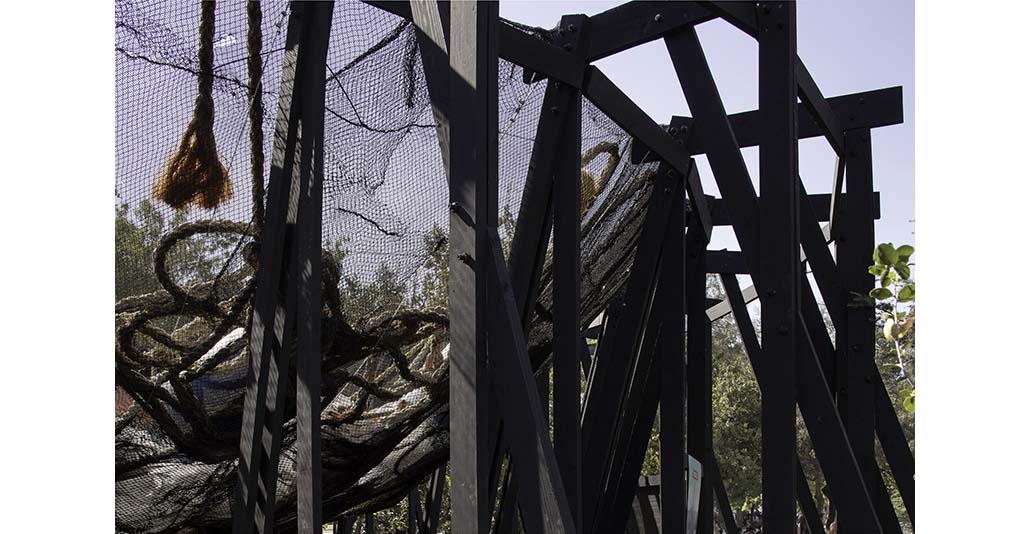
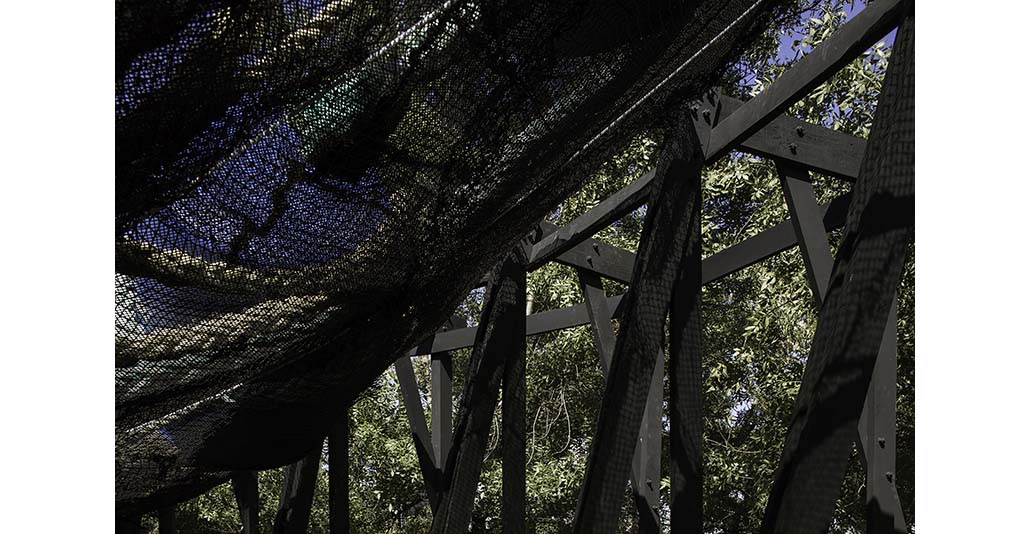
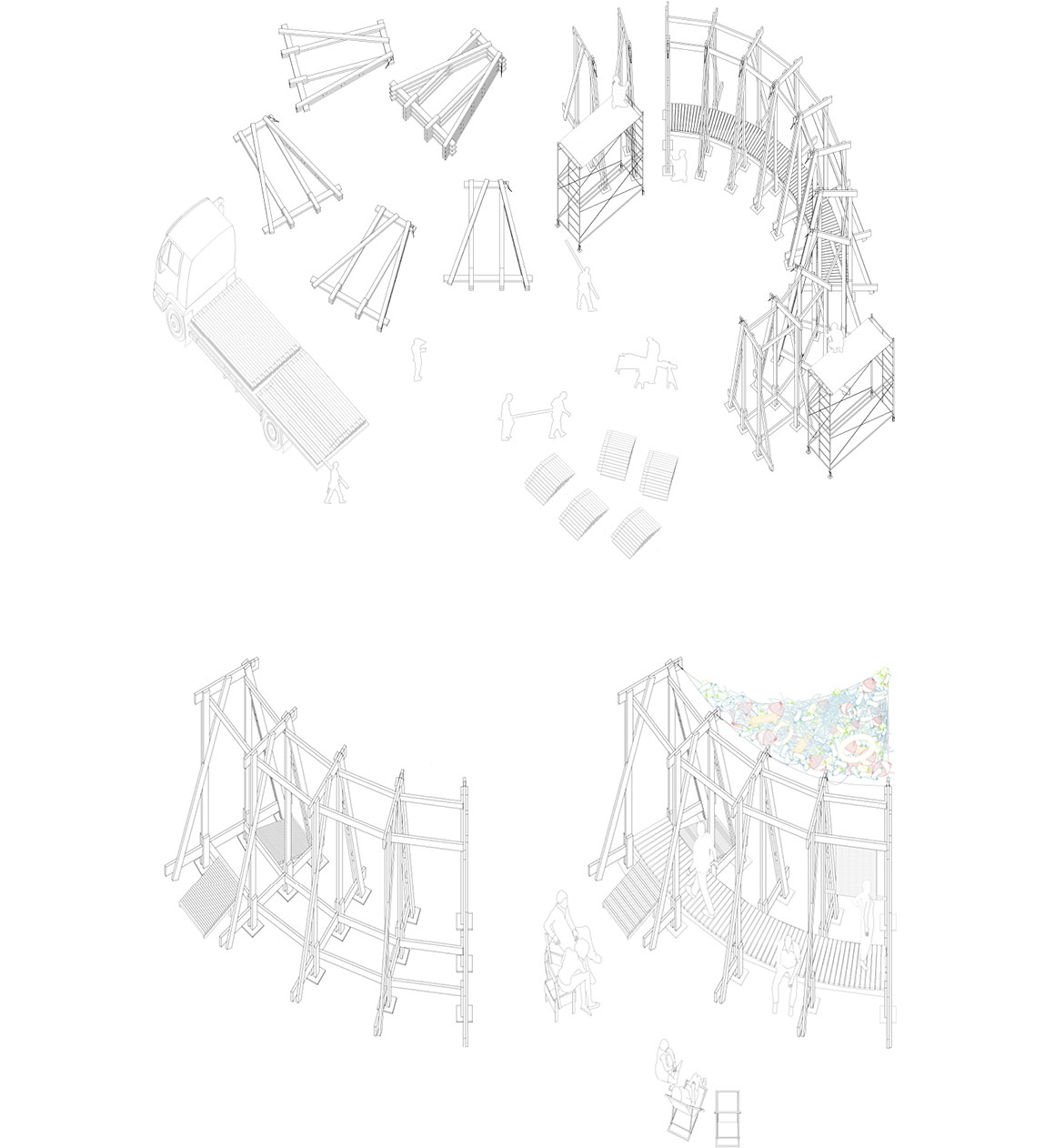
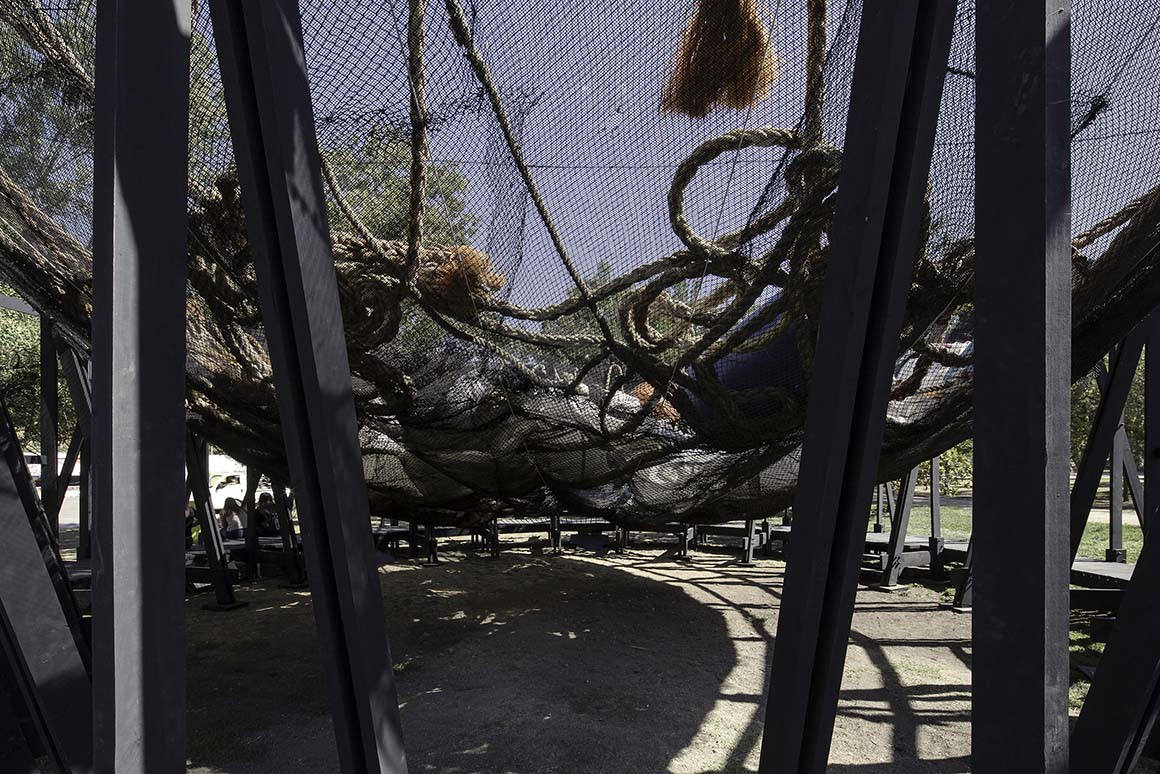
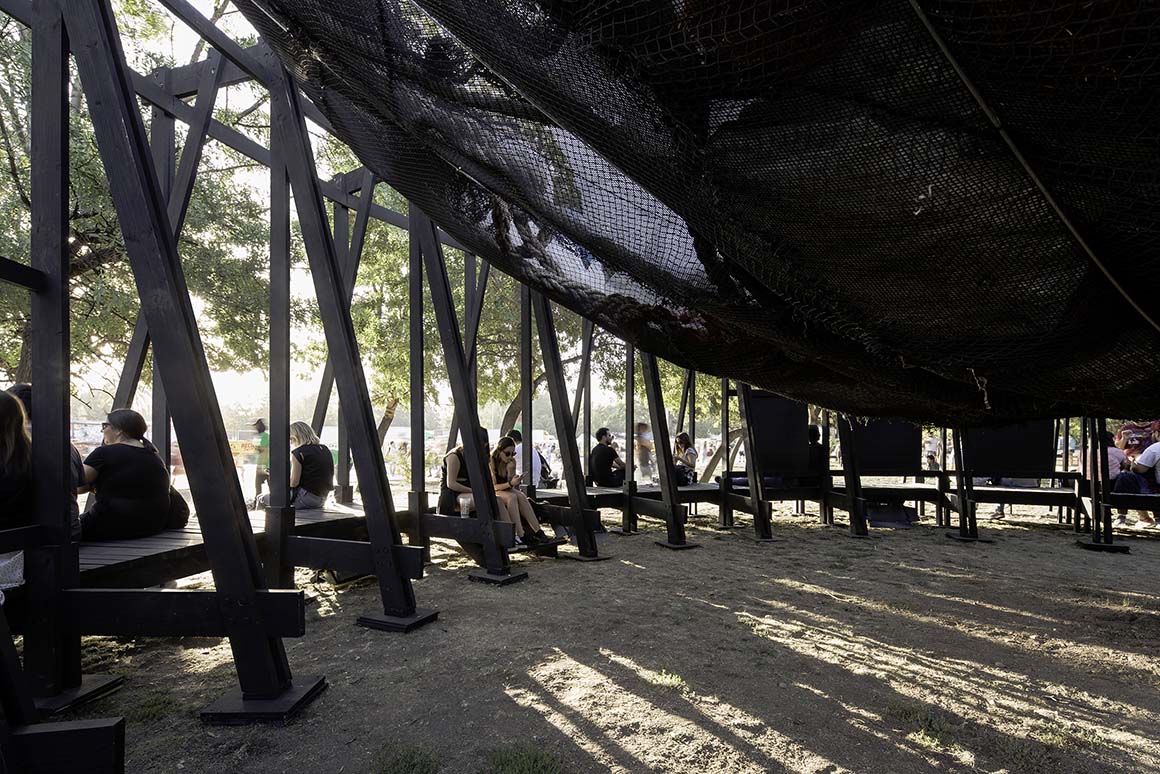
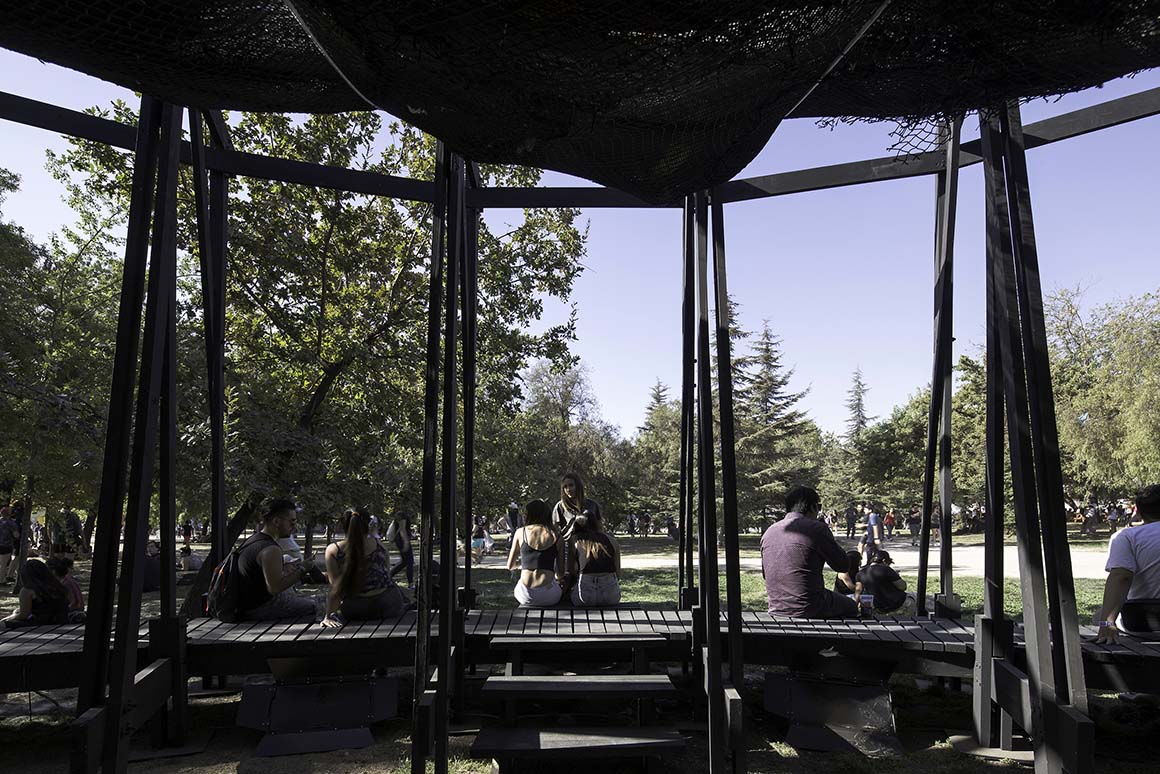
Meanwhile, the wooden structure evokes the image of wooden piers commonly seen along coastlines. Thanks to its modular assembly, it can be easily installed, dismantled, and relocated for new purposes. The circular design allows it to be placed in any orientation without directional limitations. It is an ideal structure for open spaces like the park where it was first installed. The weight of the waste is evenly distributed along the 24 structures arranged in a circle, stably supporting the inverted dome. People move around, sit, wander, and gather to converse around the pavilion filled with waste and its message.
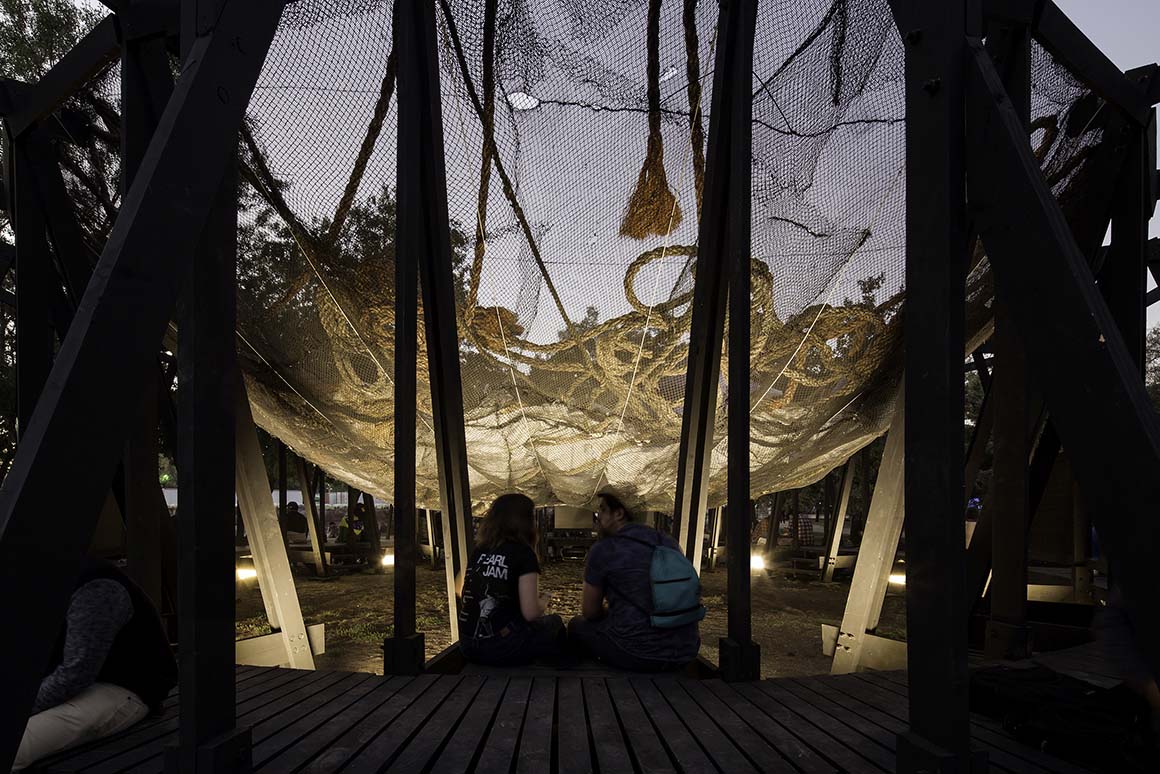
Project: Inverted Dome / Location: O´Higgins Park, Santiago, Chile / Architect: Guillermo Hevia García / Collaborators: Felipe Droppelmann / Built area: 175m² / Project year: 2018 / Competition: 1st Prize / Model: Diego Rivera / Photograph: ⓒNicolás Saieh (courtesy of the architect)





























